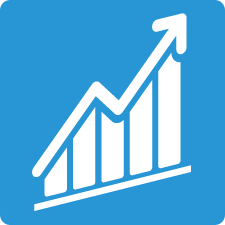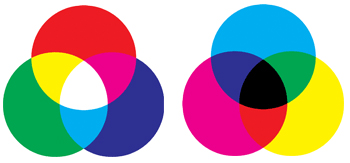For a number of years in the early 2000s, Fairfield University’s in-plant printing department operated in the red, often missing out on work that was specified by external designers. To turn the operation around, the school hired a creative director in 2010, Curtis Ebdon, whose 30-year agency career included a stint as principal owner of a firm with such blue-chip clients as General Electric and IBM.

The story of the transformation he led—and of the nearly universal need for today’s print operations to transform their businesses—was the topic of a recent Xerox Business Development Webinar Series session, “Driving Success with Value-Added Services.” InfoTrends Director Matt Swain led the session, offering insights on how and why service providers need to transform—then turning it over to Ebdon for the Fairfield University story.
A key reason to transform: service providers experiencing double-digital revenue growth derive 26 percent of their revenue from value-added services, according to InfoTrends’ recent North American Production Print Study. Recognizing the opportunity, 68 percent of print providers claim they either are currently transforming their businesses to be marketing service providers—or see the need to do so. According to Swain, most take an evolutionary path, gradually adopting new services built around digital color printing, specialty media, wide format printing, digital color packaging, web-to-print systems, data expertise, and mobile and digital communications.
A fundamental challenge in Fairfield’s transformation was to offer a relevant, centralized marketing service that could attract the many schools and departments that operated independently, in their own silos. Ebdon began by upgrading the department’s design capabilities—changing its name from “Printing and Graphic Services” to “Design and Digital Printing”—to engage more clients earlier in the project development process.
He adopted an agency model, covering the entire university with account executives assigned to proactively work with particular clients. And clients began to engage. “That’s key,” Ebdon said. “At the start of any campaign or large project, we were invited to the table to discuss their needs from design to delivery.”

Ebdon also upgraded the department’s printing, most recently with a Xerox Color 1000i Press to complement its Xerox Nuvera monochrome printers, and a web-to-print system from Rochester Software Associates. And the department has taken a greater role in buying external print, eliminating the agency markup. “We convinced our clients to let the experts make the printing decisions,” Ebdon said.
The department’s new approach has generated considerable savings. Since getting the department out of the red in his first full year, annual savings generated by Ebdon’s organization grew to $250,000 last year when 95 percent of the university’s printing was done in house.
The university also benefits from the consistent control of branding that results from what is in effect a centralized marketing department. And departments benefit from having a single contact for all their marketing needs—a one-stop shop that includes pick-up and delivery service. “We just make it easy for them,” Ebdon said.
What’s next? “We’ll expand our capabilities based on the needs of our clients,” Ebdon said. Those needs include developing cross-media communications the department can offer in partnership with the Web Communications Group, generating more savings by bringing more mailing in house and, eventually, producing revenue by seeking external clients. “At that point, we can make digital printing and design a larger profit center for the university.”
To hear a replay of the webinar, click here. To sign up for the first session in the 2016 Xerox Business Development Webinar Series, a Feb. 3 session on “The Year of Delivering the Customer Experience,” click here.
What are the next steps in your business transformation?



